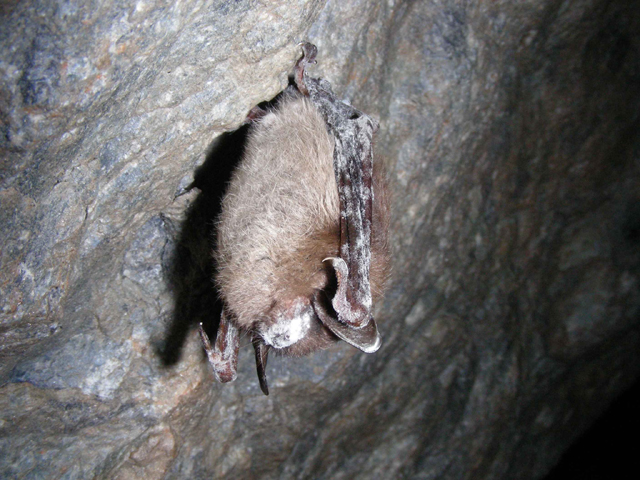First detection of deadly bat disease on West Coast concerns BC
A report confirmed last month by the Washington Department of Fish and Wildlife that White-Nose Syndrome had been detected on a dead bat near Seattle is very worrisome for the health of bat populations in British Columbia said Juliet Craig, Coordinator of the Kootenay Community Bat Project (KCBP) and BC Community Bat Program.
“We knew this deadly fungus that kills bats was moving westward across North America but we thought we had many years to prepare,” Craig said.
Craig said the BC Community Bat Program in collaboration with BC government and Wildlife Conservation Society Canada is now developing a rapid response to this emerging crisis.
Craig said currently there are no known treatments for White Nose Syndrome that can be used to save bats in the wild.
However, mitigating other threats to bat populations and preserving and restoring bat habitat may provide bat populations the resilience to rebound from the mortality that may be caused by the disease. This is where the KCBP and the general public can help.
“Although White-Nose Syndrome affects bats in caves, it will be during springtime when bats return to building roosts that we have our best chance at detecting the presence of the disease, making the work of our community bat program more important than ever before,” Craig explains.
Funded by the Columbia Basin Trust, Habitat Conservation Trust Foundation, and the Habitat Stewardship Program, the KCBP conducts public outreach activities, responds to public reports of roosting bats in buildings, promotes the installation of bat houses, and coordinates a citizen-science bat monitoring program.
“We are asking the public to report dead bats to the toll-free phone number or email below and to also provide information on bat roosts,” said Craig.
“Bat carcasses will be submitted for testing of White-Nose Syndrome and may provide the earliest indication of the presence of the disease in BC.”
Craig said anyone finding a dead bat should not to touch it with bare hands. Instead, the public is advised to collect it in a bag and label the bag with the date, location and your name, and then put the bag in the freezer.
Then contact the KCBP as soon as possible for shipping directions and further information.
The KCBP also encourages residents to report bat roosting sites in building structures, such as attics, sheds and bat houses, to help identify where certain species are present; if anyone needs to evict bats from a structure, they are encouraged to contact the KCBP who can provide information on proper procedures to follow.
Story originated at The Nelson Daily






















